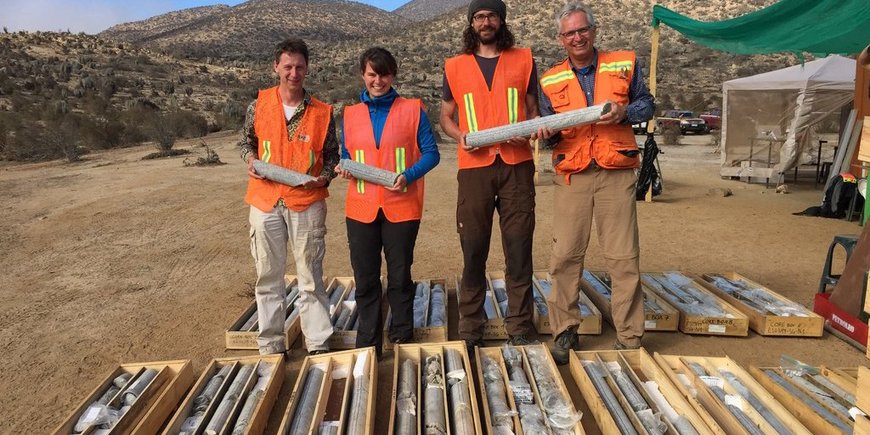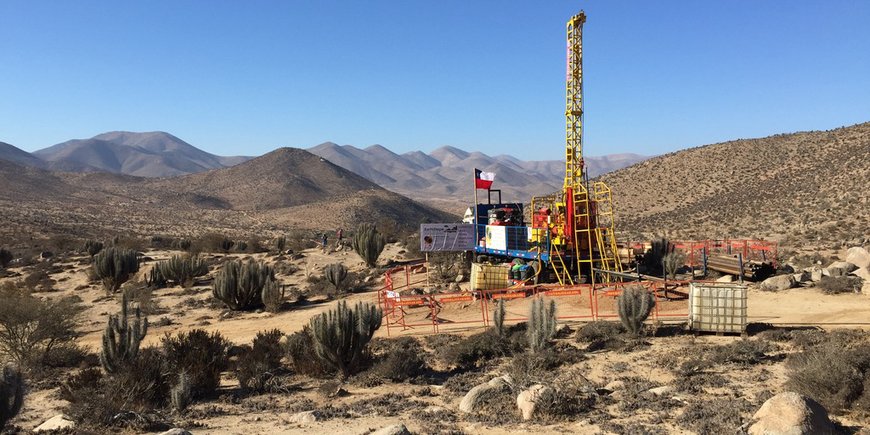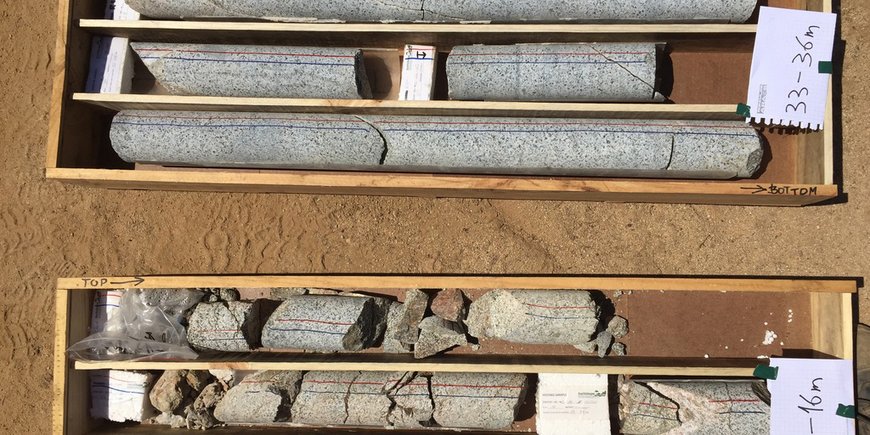The Earth's surface is the part of our planet that forms the interface between the solid Earth's crust, water body surfaces, and soils on the one hand and the atmosphere on the other. But how far down does the Earth's surface reach? To literally get to the bottom of this question, the 'Deep Earthshape' drilling campaign has started in northern Chile in recent weeks. It is coordinated by Friedhelm von Blanckenburg, head of GFZ section Earth Surface Geochemistry, supported by the Scientific Drilling Working Group of section Geomechanics and Scientific Drilling with the participation of sections Geomicrobiology, and Near-Surface Geophysics as well as a number of German universities.
Processes on the Earth's surface are influenced by the atmosphere. Animals and plants settle here and weathering and soil formation take place. Below this uppermost layer of the Earth, there is solid rock. But how deep one has to drill to find this solid rock? Is the Earth's surface equally thick everywhere and what does the extent of the layer depend on?
To answer these questions, an international team of scientists from GFZ and the universities of Tübingen, Göttingen, Bayreuth and the TU Berlin is now drilling 100 metres deep in La Serena in the Chilean coastal mountains as part of the DFG-funded priority programme 'Earthshape - Earth Surface Shaping by Biota'. The well is the first in a series of four wells along a climate gradient, with very different climatic conditions - from humid rainforest to dry Atacama Desert.
An important process that determines how far down it goes is rock weathering. It causes soils to form and decomposes the surface of rock bodies in fissures and crevices. These weathering processes depend on climate: the more humid the climate, the faster the weathering takes place. One assumption therefore was that where the climate is humid and where a lot of water seeps down to the depths, the soil layer is thick and the Earth's surface extends further into the depths than under dry conditions.
However, the scientists are surprised by the first results of the dry well location in the desert. Friedhelm von Blanckenburg: "We may have to revise two conventional ideas at once. First, we were able to determine that with 80 meters the Earth's surface extends to far greater depths than previously assumed.” In mountainous regions like in Chile, science has so far assumed weathering zones with a maximum depth of 20 meters. "Secondly, this depth is apparently reached even under the dry climatic conditions that have prevailed in northern Chile for several million years." The rock in La Serena in the form of granite is heavily weathered down to a depth of 80 metres. Only down there unweathered granite rock can found.
In order to find out what has led to this weathering depth, back in Germany, the drill cores will be examined in more detail in the laboratory. Von Blanckenburg: "One explanation could be microbes living at depth, which decompose the rock even without the presence of water. If they exist, we are interested in exactly how they do it and what they live on there". In the laboratory in Potsdam, microbiological characterization will follow and DNA will be searched for in the drill core material. It remains to be seen what secrets about life under our feet the La Serena core and the other drill cores will reveal. (ak)










![[Translate to English:] Torsten Sachs in front of a climate station on a field](/fileadmin/_processed_/3/9/csm__TorstenSachs_bearbeitet_GS_4a1365ef84.jpeg)

![[Translate to English:] left image flood at the Ahrtal: image from above, several houses are flooded; left image:: Heidi Kreibich;](/fileadmin/_processed_/4/4/csm_Bild2_9af0130e9f.png)



![[Translate to English:] Start der Vega Rakete](/fileadmin/_processed_/6/4/csm_20231201-kachel_Vega-VV23-launch_ESA-CNES-Arianespace_706716b68c.jpeg)









![[Translate to English:] Poster exhibition at the Brandenburg Hydrogen Day at the GFZ, some participants in the foreground](/fileadmin/_processed_/6/5/csm_Erster_Brandenburgischer_Wasserstofftag_GFZ_402fcec95e.jpeg)
![[Translate to English:] Group picture of the participants](/fileadmin/_processed_/9/4/csm_20231108_CAWa-Workshop-Tashkent_Gruppenbild_99ea779d8a.jpeg)

![[Translate to English:] [Translate to English:] Hörsaal](/fileadmin/_processed_/e/6/csm_H%C3%B6rsal_e21ac645fb.jpeg)


![[Translate to English:] The Delegations in the Historic Library on the Telegrafenberg. In the back there are from left to right, the Dutch Ambassador for Germany, Ronald van Roeden, the Dutch Minister for Education, Culture and Science, Robbert Dijkgraaf and the scientific director of the GFZ, Susanne Buiter.](/fileadmin/_processed_/d/b/csm_Kachel-2_9eba4b4212.jpeg)

